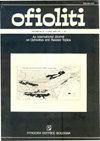RADIOLARIAN AGES FOR THE SEDIMENTARY COVER OF SEVAN OPHIOLITE (ARMENIA, LESSER CAUCASUS)
IF 1.3
4区 地球科学
Q2 GEOLOGY
引用次数: 16
Abstract
Age data of Armenian ophiolites are of great importance for understanding the palaeogeographic and geodynamic evolution of Tethys in the Caucasus area and for lateral correlations of Tethyan ophiolitic belts in the Middle East area. Moderately well-preserved radiolarian assemblages obtained during this study from the Sarinar section of eastern Armenia allow to investigate the sedimentary and volcanic history recorded in a ca. 30 m-thick radiolarite sequence associated with spilitic lavas of the Sevan ophiolitic suture zone. The latest Bajocian-early Bathonian assemblage yielded from a sample situated close to the base of the studied sequence suggests that radiolarian ooze accumulation took place on oceanic crust of late Middle Jurassic age (probably Bajocian). Several tuffite levels are intercalated within the lower to middle part of the radiolarite sequence; a late Bathonian-early Oxfordian assemblage from a sample taken just below the uppermost tuffitic bed, suggests that during this time the oceanic domain of Sevan ophiolites was close to subaerial volcanic activity.7个蛇绿岩沉积盖层的放射虫年龄(亚美尼亚、小高加索)
亚美尼亚蛇绿岩的年龄资料对于了解高加索地区特提斯的古地理和地球动力学演化,以及中东地区特提斯蛇绿岩带的横向对比具有重要意义。本研究从亚美尼亚东部的Sarinar剖面获得了保存较为完好的放射虫组合,可以研究与Sevan蛇绿岩缝合带的细泡熔岩相关的约30 m厚的放射虫序列中记录的沉积和火山历史。从靠近研究层序底部的样品中获得的最新的巴约世-早Bathonian组合表明放射虫在中侏罗世晚期(可能是巴约世)的海洋地壳上发生了沉积。若干凝灰岩层序穿插于放射云母层序的中下部;从最上层凝灰岩层下方采集的样本中,发现了晚bathonian -早oxford的组合,表明在此期间,Sevan蛇绿岩的海洋区域接近陆上火山活动。
本文章由计算机程序翻译,如有差异,请以英文原文为准。
求助全文
约1分钟内获得全文
求助全文
来源期刊

Ofioliti
地学-地质学
CiteScore
2.40
自引率
7.70%
发文量
1
期刊介绍:
Since 1976, Ofioliti provides an international forum for original contributions and reviews in the field of the geodynamics, petrology, geochemistry, biostratigraphy, stratigraphy, tectonics and paleogeography applied to ophiolitic terrains and modern oceanic lithosphere, including their sedimentary cover. Studies of topics such as geodynamics of the mantle, the evolution of orogens including ophiolites and paleoceanography are also welcome
 求助内容:
求助内容: 应助结果提醒方式:
应助结果提醒方式:


